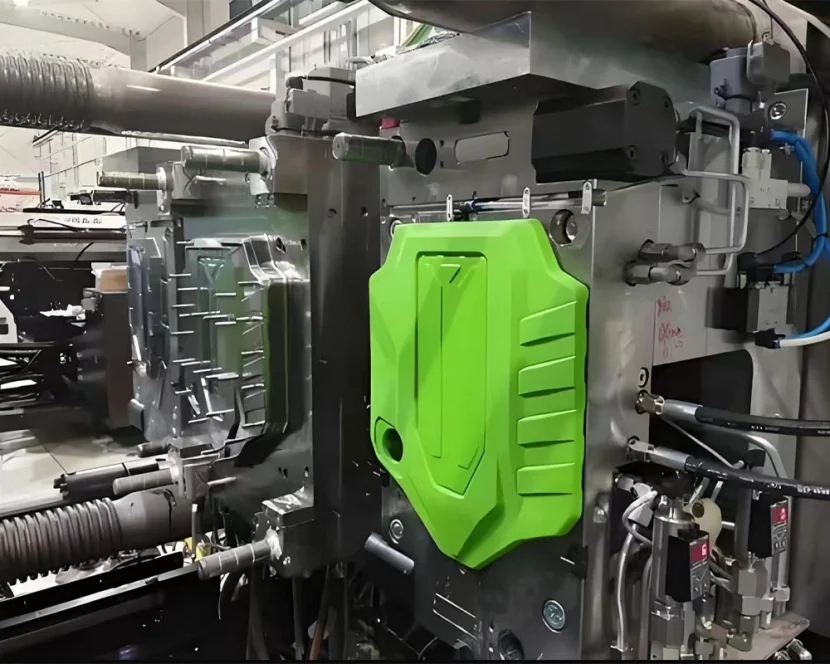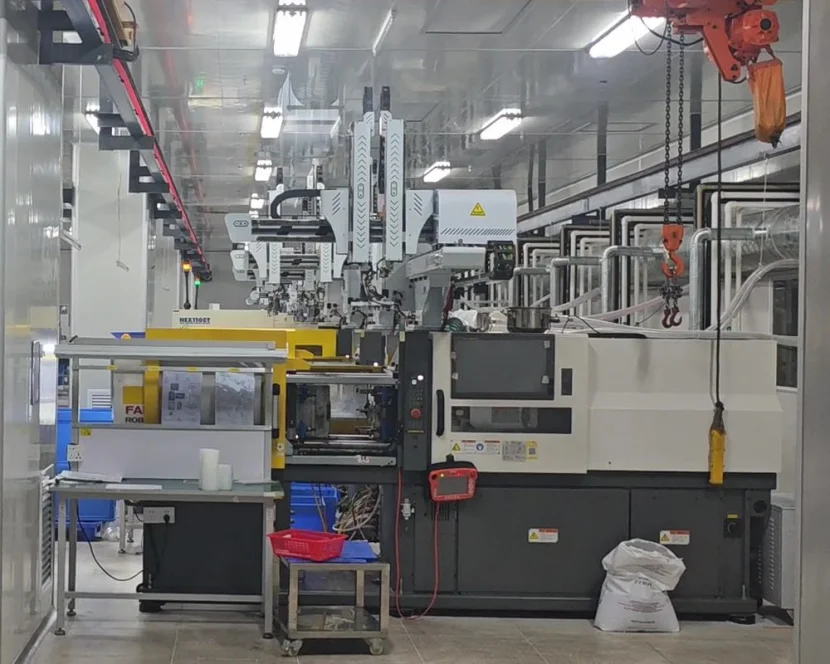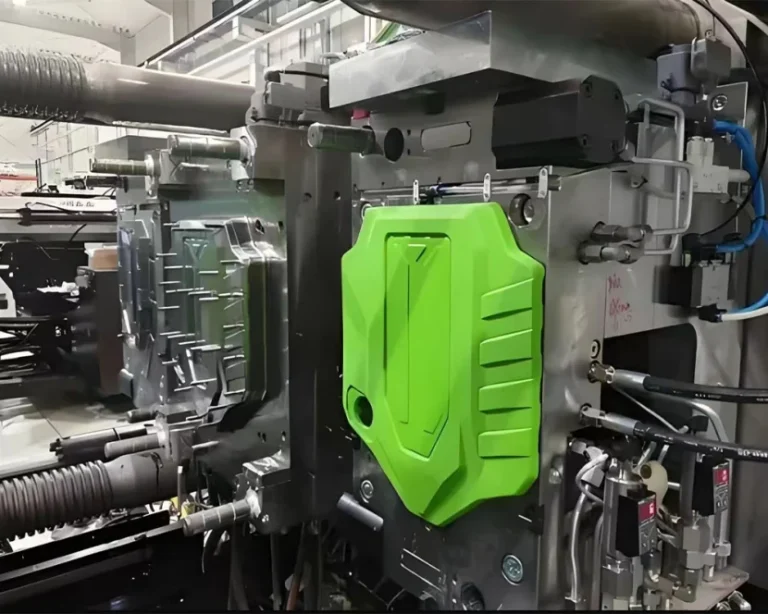Plastic injection molding is the optimum and most practiced process of the new age manufacturing period. You must be aware of this process whether you require a plastic injection molding service provider company or not.
What is Plastic Injection Molding?

Plastic injection molding is a bulk manufacturing process of the same plastic part. It can be defined as injection of pressurized molten plastic material into the mold cavity. The plastic material hardens and solidifies when injected into the mold cavity and takes the shape of the mold.
Key Factors Involved
Plastic Injection Molding Machine: It is the central machine of the process. It has an injection unit, which will melt the plastic pellets and inject plastic in a molten form into the mold, and a clamping unit, which will shut and unite the molten halves together with injection. The auxiliaries are the controlling part of managing the process as a whole parameters such as temperature, pressure, and injection rate.
Mold Cavity: It is an empty inner space of the mold through which plastic melt flows. The mold cavity is created and sized in the form of the molded plastic component. There are several cavities in other molds where several plastic components are produced at once, greatly increasing productivity.
Plastic Material Melt: The plastic material to be processed through the injection process is plastic material in pellet or powder form of the plastic material. Acrylonitrile butadiene styrene (ABS), polypropylene (PP), high-density polyethylene (HDPE), and several other plastics are among the widely used plastics for the process. All the plastics are undergoing varying characteristics like strength, elasticity, chemical and thermal resistance due to which all can be utilized for some other application.
How Does Plastic Injection Molding Work?

The process of plastic injection molding would be a series of steps, each step of which would result in the production of quality plastic products.
Step-by-Step Process:Mold Design and Preparation
The professional engineers begin to design the mold tools. The mold consists of a two-piece unit: the core, which is applied for the development of the interior of the part, and the cavity, which is applied for the development of the exterior of the part. All the detail of the plastic part, that is, dimension, shape, and any further details like holes, threads, or complicated geometry, are included in the design of the mold.
Design precedes mold production. All the manufacturing processes like CNC machining are merely used to produce the mold with the correct draft angle, size, and shape. Draft angle, 1 – 2 degrees, plays a crucial role in the fact that it will allow the molded part to be released from the mold easily without distorting or sticking.
Material Selection and Melting
The appropriate thermoplastic material for use, based on the final application of the plastic component, is selected. If, as an example, the component will be rigid and will require thermal resistance, polycarbonate could be among the appropriate ones. In every instance where flexibility is a requirement, elastomers like TPE (Thermoplastic Elastomer) are employed.
The preferred plastic in the form of pellets is filled into the hot barrel of the injection moulding machine. Frictional heat is generated as a screw, which moves along the axis in the barrel, is rotated to heat it and melt the plastic pellets. The barrel is kept at an optimum temperature to achieve the optimum condition of the melted plastic.
Injection of Molten Plastic into the Mold Cavity
As the plastic is completely melted, the injection system of the machine starts. It injects the molten plastic with very high pressure of around 100 – 150 MPa through a nozzle into the mold cavity. The injected molten plastic pressure fills all the corners of the mold cavity whether the part has complex shapes or has small details.
There exists a pack and hold phase for all the plastic being injected. There is a bit of utilization of extra pressure to some degree in this phase so that the plastic has been packed into all of the mold areas and also to provide space for shrinking when cooling the part.
Solidification of the Plastic
Once the mold is filled with plastic that is hot, the plastic begins to cool. There are cooling channels or heat sinks integrated in the mold and cooling fluid, i.e., water or oil, is passed through the channels to extract the heat from the plastic. Part size, thickness, etc., and type of plastic used will affect cooling time. Thin sections, for example, will cool faster than thick sections and certain plastics with thermal resistance will cool very slowly.
The cooling must be symmetrical so that the plastic part will hold the shape as well as the size accuracy. Defects like warping, in which the part will be at an angle, or shrinking, in which the part will be smaller, are caused by unsymmetrical cooling.
Ejection of the Molded Part
Once the plastic has fully hardened, the mold is opened and an ejector system, usually a set of ejector plates or pins, is activated to push the molded piece out of the mold cavity. The ejector system is constructed in such a manner that it ejects the part out of the mold without causing any damage to the part. In other instances, air ejecting devices or coatings are applied for straightforward ejection in the case of a component with complex shapes or delicate details.
The component is subjected to secondary post-processing operations such as polishing, trimming, or assembly depending on the final product on ejection.
The Injection Molding Cycle
The whole plastic injection moulding is cycle operation. The mould would once more close after part ejection and the process would be repeated from the injection and melting stage. The process could be repeated a thousand times and mass production of plastic components is possible. Cycle speed would be a function of part complexity, cooling time, and capacity of plastic injection moulding machine.
Advantages of Plastic Injection Molding
Cost – Effectiveness: Its cost – effectiveness is one of the largest benefits of plastic injection molding, especially for mass – volume production. The per – part cost decreases after the initial capital outlay in equipment and mold has been made since further parts are produced. This is because each subsequent part does not need comparatively high labor and time against other modes of manufacture.
High degree of precision and reproducibility: The process allows for the production of parts with accurate tolerances, typically ±0.005 inches. This is a high degree of precision, which assures all produced parts are identical size and shape, something vital in applications where parts need to be free of defects to fit perfectly together, i.e., in the automotive and electronics sectors.
Material and Design Flexibility: Injection molding is able to accommodate almost unlimited variety of plastic materials, more than 18,000 various individual thermoplastics, thermosets, and elastomers. Material flexibility is tantamount to parts possible to manufacture with given characteristics, i.e., strength, flexibility, or chemical resistance. Production of parts with complex geometries that are impossible to make or hard to make by other means is also facilitated by the process.
High – Volume Production: Injection molding is best for high – volume production. Since it can manufacture hundreds or thousands of pieces in a day, it can serve the purpose of mass – scale manufacturing organizations. Certain multi – cavity molds even increase the production level, and therefore it is a suitable option for mass – produced consumer goods, automotive components, etc.
Applications of Plastic Injection Molding
Plastic injection molding is also utilized to a large extent in many other sectors:
Automotive industry: Plastic injection molding is utilized for the manufacturing of a wide range of different parts in automobiles such as dashboard components, interior trim components, and body components like bumpers. The process allows the manufacturing of parts with pleasing strength – to – weight ratios, thereby making the automobile light and fuel-efficient.
Electronic Industry: Phone covers, computer keyboard, and enclosures of electronic gadgets are traditionally manufactured utilizing the plastic injection molding process. The technology has advanced to such an extent that they are designed to replace one another completely without any compromise whatsoever, utilized in the insulation of internal electronic components.
Medical Industry: The medical sector utilizes plastic injection molding in the manufacture of a range of products, from syringes to prosthetics and medical device housings. It has become an excellent form of production in the manufacture of medical products that are of high quality and safety level due to its utilization of biocompatible plastics and its ability to produce with high precision.
Consumer Goods Industry: Starting from toys and accessories at home to packaging material, plastic injection molding is employed to produce diverse consumer goods. The process enables the production of products with a low cost price and acceptable outlook to meet clients all over the world.
Conclusion

In case you seek a plastic injection molding service supplier, as now you have learned about the process, now you can make a wise decision. We at Silkbridge have a large amount of experience and advanced infrastructure for plastic injection molding. We are capable of handling projects of any size and complexity to provide high-quality output. Get in touch with us today at contact@silkbridgeltd.com. Or our whatsapp link https://wa.me/8618122838771 and get to know our products and services, and we will help you turn your idea for a plastic product into a reality.



